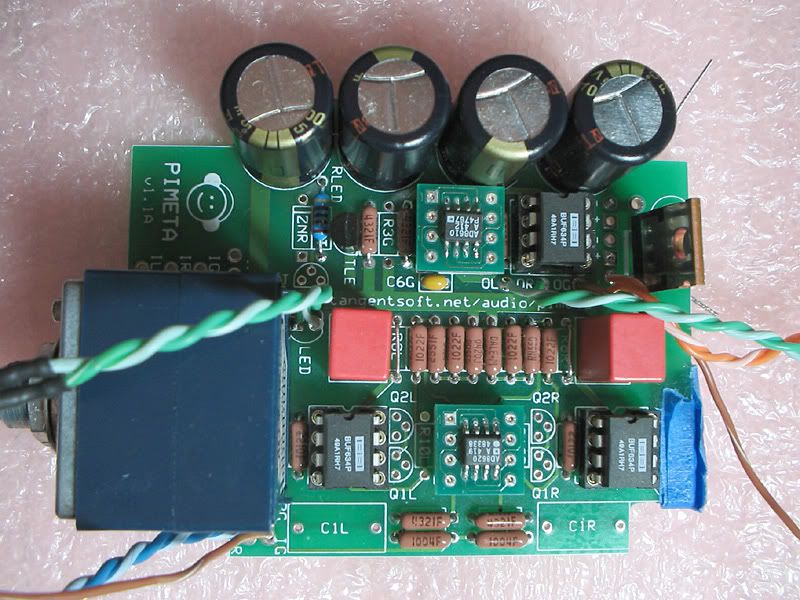OK, I realize the pic of the board above is upside down, so keep that in mind when looking at these numbers.
This time, thanks to Mister X's Xcellent advice, I am reading with the ground at the signal input, and NOT the power input.

Makes more sense now.
BUFR
-12.16 -12.16
0.000 0.000
12.16 0.001
12.16 -12.16
OPALR
0.000 -12.16
0.000 0.000
0.000 0.000
12.16 0.000
BUFL
-0.001 -12.16
0.000 0.000
12.16 -0.004
12.16 -12.16
BUFG
0.000 -12.16
-0.001 -0.001
12.16 -0.003
12.16 -12.16
OPAG
0.000 -12.16
0.001 0.000
12.16 -0.001
-0.001 0.001
How does this look now?
-Ed
This time, thanks to Mister X's Xcellent advice, I am reading with the ground at the signal input, and NOT the power input.

Makes more sense now.
BUFR
-12.16 -12.16
0.000 0.000
12.16 0.001
12.16 -12.16
OPALR
0.000 -12.16
0.000 0.000
0.000 0.000
12.16 0.000
BUFL
-0.001 -12.16
0.000 0.000
12.16 -0.004
12.16 -12.16
BUFG
0.000 -12.16
-0.001 -0.001
12.16 -0.003
12.16 -12.16
OPAG
0.000 -12.16
0.001 0.000
12.16 -0.001
-0.001 0.001
How does this look now?
-Ed








